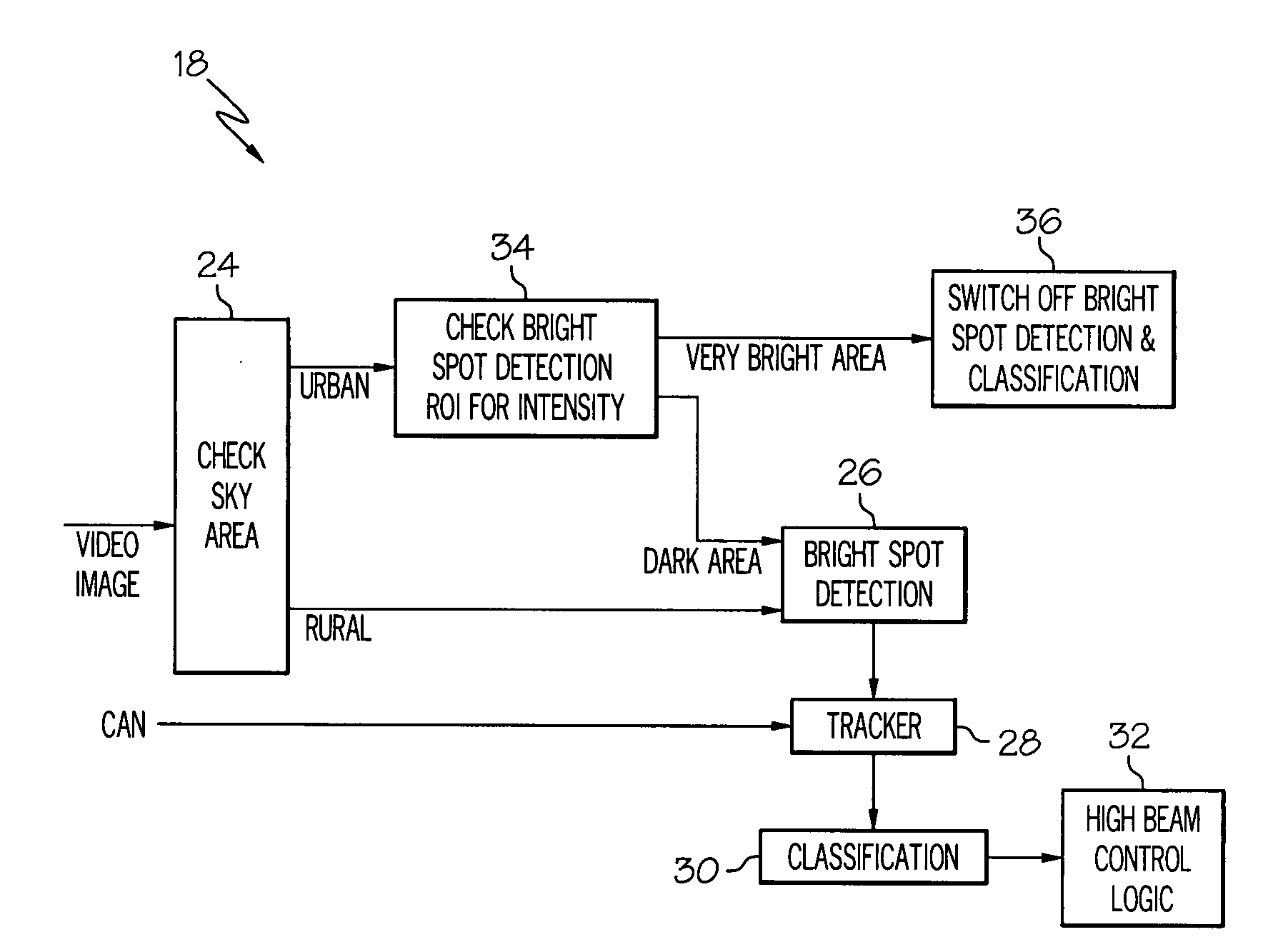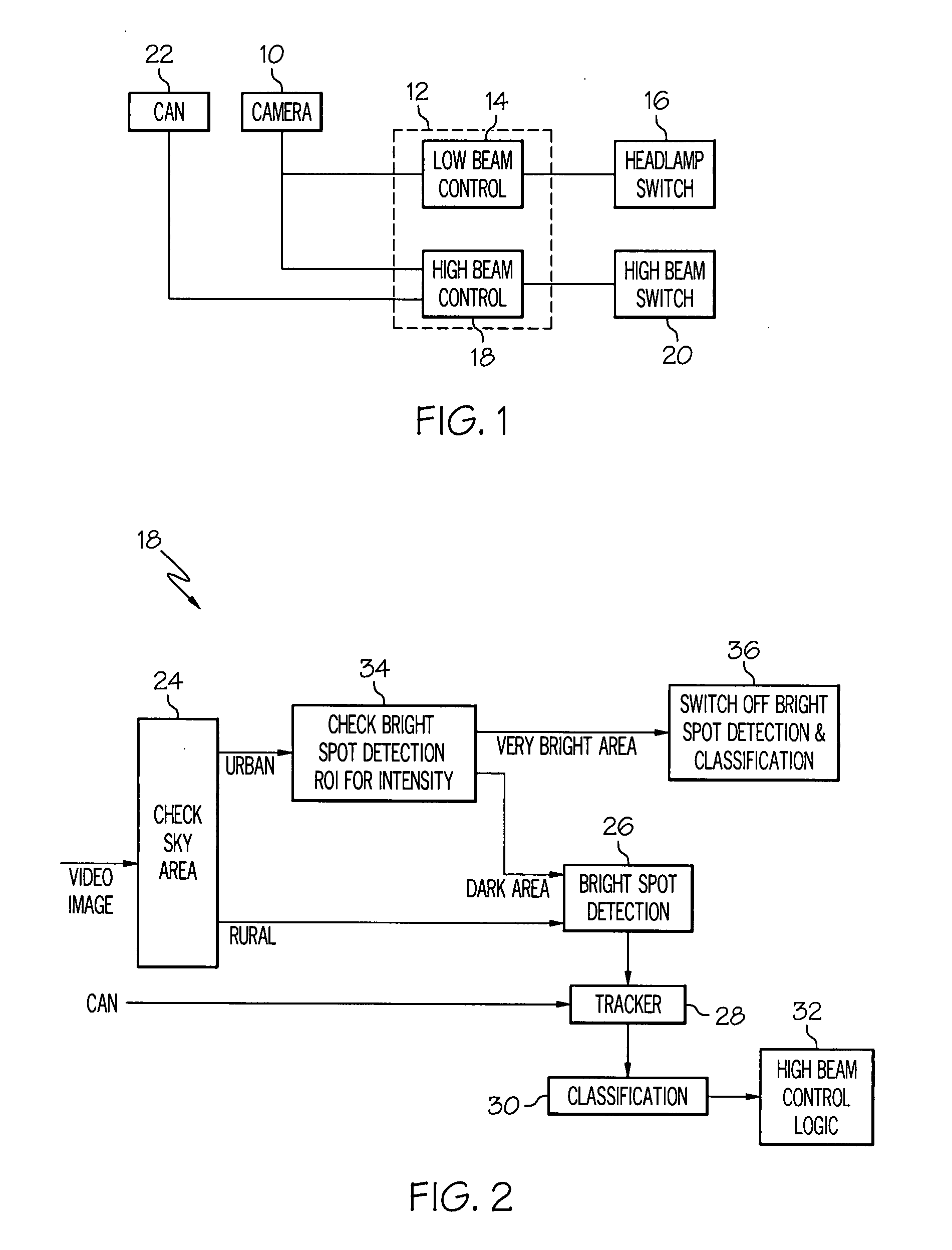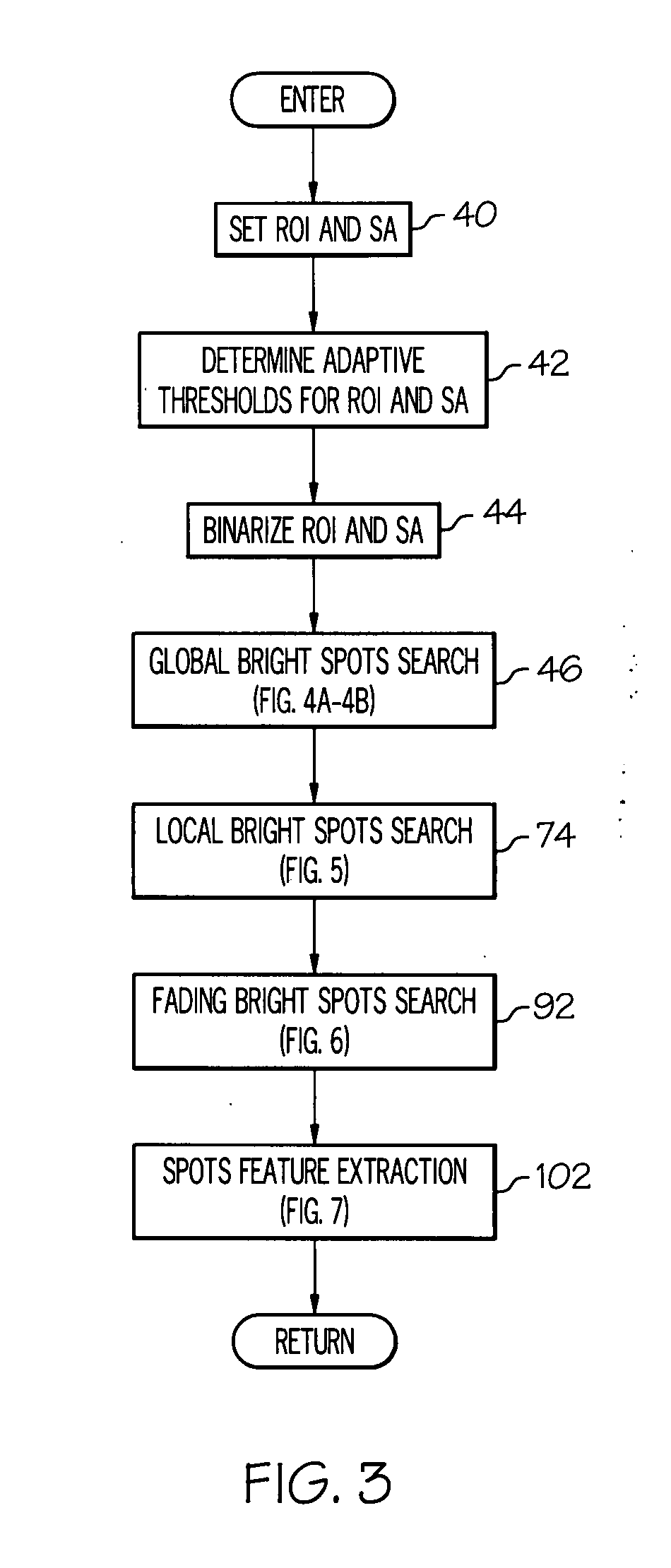Bright spot detection and classification method for a vehicular night-time video imaging system
a video imaging system and night-time technology, applied in the direction of television systems, traffic control systems, instruments, etc., can solve the problems of difficult to distinguish bright spots, especially in night-time driving conditions, and other low-visibility driving conditions
- Summary
- Abstract
- Description
- Claims
- Application Information
AI Technical Summary
Benefits of technology
Problems solved by technology
Method used
Image
Examples
Embodiment Construction
[0018]The method of the present invention is disclosed herein in the context of a headlamp control system where a forward-looking video image is processed to detect and classify bright spots associated with leading and on-coming vehicles. However, it will be understood that the disclosed detection and classification methodologies are also applicable to night-time vision systems other than headlamp control.
[0019]Referring to FIG. 1, the depicted block diagram is a representation of an automatic motor vehicle headlamp control system including a forward-looking monochrome video camera 10 and an image processor 12 for carrying out an image processing method for detecting and classifying bright spots imaged by the camera during night-time driving of the vehicle. The camera 10 is a single monochrome video camera that is mounted in the host vehicle to produce digital video images of a scene in the vehicle's forward travel path. The video image data can be used for headlamp activation (i.e....
PUM
 Login to View More
Login to View More Abstract
Description
Claims
Application Information
 Login to View More
Login to View More - R&D
- Intellectual Property
- Life Sciences
- Materials
- Tech Scout
- Unparalleled Data Quality
- Higher Quality Content
- 60% Fewer Hallucinations
Browse by: Latest US Patents, China's latest patents, Technical Efficacy Thesaurus, Application Domain, Technology Topic, Popular Technical Reports.
© 2025 PatSnap. All rights reserved.Legal|Privacy policy|Modern Slavery Act Transparency Statement|Sitemap|About US| Contact US: help@patsnap.com



